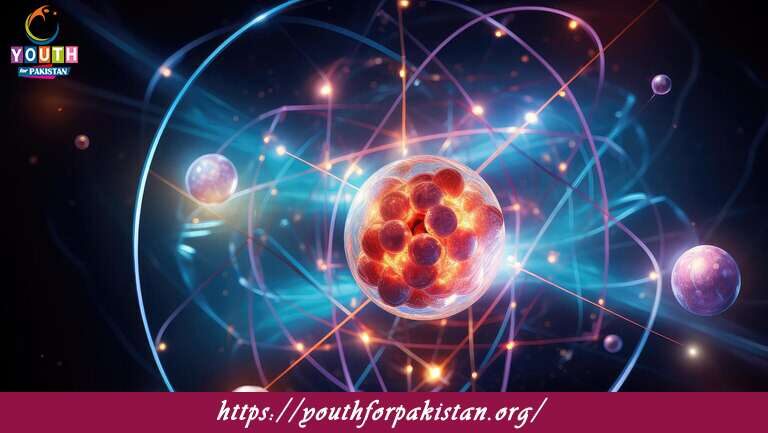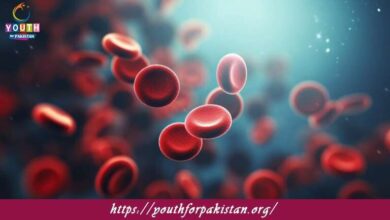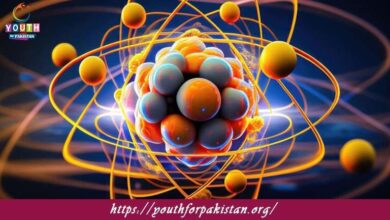11th Class Chemistry Chapter 5 MCQs with Answers

Dive into Atomic Structure MCQs featuring questions on atomic models, isotopes, and quantum numbers. Chapter 5 quizzes make complex concepts approachable for 11th Class Chemistry students.
a) Protons
b) Neutrons
c) Electrons
d) Nucleons
The total number of protons and neutrons present in the nucleus of an atom is called:
a) Atomic number
b) Mass number
c) Atomic mass
d) Atomic weight
The subatomic particle(s) found outside the nucleus of an atom is/are:
a) Protons
b) Neutrons
c) Electrons
d) Nucleons
The charge of a proton is:
a) Positive
b) Negative
c) Neutral
d) Variable
The charge of an electron is:
a) Positive
b) Negative
c) Neutral
d) Variable
The charge of a neutron is:
a) Positive
b) Negative
c) Neutral
d) Variable
The center of an atom where protons and neutrons are located is called:
a) Electron cloud
b) Nucleus
c) Orbit
d) Electron shell
The number of electrons in a neutral atom is equal to the number of:
a) Protons
b) Neutrons
c) Nucleons
d) Electrons in the outermost shell
The atomic mass of an element is the:
a) Total number of protons and neutrons in one atom of the element
b) Total number of protons in one atom of the element
c) Total number of neutrons in one atom of the element
d) Total number of electrons in one atom of the element
The number of protons in the nucleus of an atom determines its:
a) Atomic mass
b) Atomic number
c) Mass number
d) Atomic weight
Isotopes of an element have the same number of:
a) Protons
b) Neutrons
c) Electrons
d) Nucleons
Isotopes of an element have different number of:
a) Protons
b) Neutrons
c) Electrons
d) Nucleons
The term used to represent atoms of the same element with different mass numbers is:
a) Isomers
b) Isotopes
c) Isobars
d) Isotones
The sum of protons and neutrons in an atom is also known as:
a) Atomic number
b) Mass number
c) Atomic mass
d) Atomic weight
An atom of an element contains 6 protons and 8 neutrons. Its mass number will be:
a) 14
b) 6
c) 8
d) 2
The number of electrons in a neutral atom is also equal to the number of:
a) Protons
b) Neutrons
c) Electrons in the outermost shell
d) Nucleons
The negatively charged particles in an atom are called:
a) Protons
b) Neutrons
c) Electrons
d) Nucleons
The number of protons and neutrons in an atom is equal to its:
a) Atomic number
b) Mass number
c) Atomic mass
d) Atomic weight
The number of electrons in a neutral atom is equal to the number of:
a) Protons
b) Neutrons
c) Nucleons
d) Electrons in the outermost shell
The number of protons in the nucleus of an atom determines its:
a) Atomic mass
b) Atomic number
c) Mass number
d) Atomic weight
Isotopes of an element have the same number of:
a) Protons
b) Neutrons
c) Electrons
d) Nucleons
Isotopes of an element have different numbers of:
a) Protons
b) Neutrons
c) Electrons
d) Nucleons
The term used to represent atoms of the same element with different mass numbers is:
a) Isomers
b) Isotopes
c) Isobars
d) Isotones
The sum of protons and neutrons in an atom is also known as:
a) Atomic number
b) Mass number
c) Atomic mass
d) Atomic weight
An atom of an element contains 6 protons and 8 neutrons. Its mass number will be:
a) 14
b) 6
c) 8
d) 2
The number of electrons in a neutral atom is also equal to the number of:
a) Protons
b) Neutrons
c) Electrons in the outermost shell
d) Nucleons
The negatively charged particles in an atom are called:
a) Protons
b) Neutrons
c) Electrons
d) Nucleons
The number of protons and neutrons in an atom is equal to its:
a) Atomic number
b) Mass number
c) Atomic mass
d) Atomic weight
The number of electrons in a neutral atom is equal to the number of:
a) Protons
b) Neutrons
c) Nucleons
d) Electrons in the outermost shell
The number of protons in the nucleus of an atom determines its:
a) Atomic mass
b) Atomic number
c) Mass number
d) Atomic weight
Isotopes of an element have the same number of:
a) Protons
b) Neutrons
c) Electrons
d) Nucleons
Isotopes of an element have different numbers of:
a) Protons
b) Neutrons
c) Electrons
d) Nucleons
The term used to represent atoms of the same element with different mass numbers is:
a) Isomers
b) Isotopes
c) Isobars
d) Isotones
The sum of protons and neutrons in an atom is also known as:
a) Atomic number
b) Mass number
c) Atomic mass
d) Atomic weight
An atom of an element contains 6 protons and 8 neutrons. Its mass number will be:
a) 14
b) 6
c) 8
d) 2
The number of electrons in a neutral atom is also equal to the number of:
a) Protons
b) Neutrons
c) Electrons in the outermost shell
d) Nucleons
The negatively charged particles in an atom are called:
a) Protons
b) Neutrons
c) Electrons
d) Nucleons
The number of protons and neutrons in an atom is equal to its:
a) Atomic number
b) Mass number
c) Atomic mass
d) Atomic weight
The number of electrons in a neutral atom is equal to the number of:
a) Protons
b) Neutrons
c) Nucleons
d) Electrons in the outermost shell
The number of protons in the nucleus of an atom determines its:
a) Atomic mass
b) Atomic number
c) Mass number
d) Atomic weight
Isotopes of an element have the same number of:
a) Protons
b) Neutrons
c) Electrons
d) Nucleons
Isotopes of an element have different numbers of:
a) Protons
b) Neutrons
c) Electrons
d) Nucleons
The term used to represent atoms of the same element with different mass numbers is:
a) Isomers
b) Isotopes
c) Isobars
d) Isotones
The sum of protons and neutrons in an atom is also known as:
a) Atomic number
b) Mass number
c) Atomic mass
d) Atomic weight
An atom of an element contains 6 protons and 8 neutrons. Its mass number will be:
a) 14
b) 6
c) 8
d) 2
The number of electrons in a neutral atom is also equal to the number of:
a) Protons
b) Neutrons
c) Electrons in the outermost shell
d) Nucleons
The negatively charged particles in an atom are called:
a) Protons
b) Neutrons
c) Electrons
d) Nucleons
The number of protons and neutrons in an atom is equal to its:
a) Atomic number
b) Mass number
c) Atomic mass
d) Atomic weight
The number of electrons in a neutral atom is equal to the number of:
a) Protons
b) Neutrons
c) Nucleons
d) Electrons in the outermost shell
The number of protons in the nucleus of an atom determines its:
a) Atomic mass
b) Atomic number
c) Mass number
d) Atomic weight
Isotopes of an element have the same number of:
a) Protons
b) Neutrons
c) Electrons
d) Nucleons
Isotopes of an element have different numbers of:
a) Protons
b) Neutrons
c) Electrons
d) Nucleons
The term used to represent atoms of the same element with different mass numbers is:
a) Isomers
b) Isotopes
c) Isobars
d) Isotones
The sum of protons and neutrons in an atom is also known as:
a) Atomic number
b) Mass number
c) Atomic mass
d) Atomic weight
An atom of an element contains 6 protons and 8 neutrons. Its mass number will be:
a) 14
b) 6
c) 8
d) 2
The number of electrons in a neutral atom is also equal to the number of:
a) Protons
b) Neutrons
c) Electrons in the outermost shell
d) Nucleons
The negatively charged particles in an atom are called:
a) Protons
b) Neutrons
c) Electrons
d) Nucleons
The number of protons and neutrons in an atom is equal to its:
a) Atomic number
b) Mass number
c) Atomic mass
d) Atomic weight
The number of electrons in a neutral atom is equal to the number of:
a) Protons
b) Neutrons
c) Nucleons
d) Electrons in the outermost shell
The number of protons in the nucleus of an atom determines its:
a) Atomic mass
b) Atomic number
c) Mass number
d) Atomic weight
If you are interested to enhance your knowledge regarding Physics, Chemistry, Biology, and Computer please click on the link of each category, you will be redirected to dedicated website for each category.





